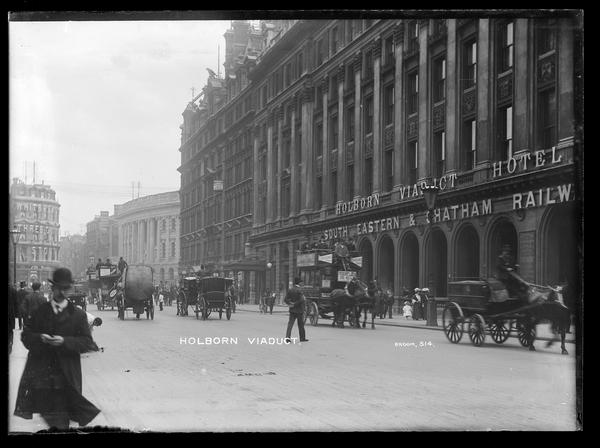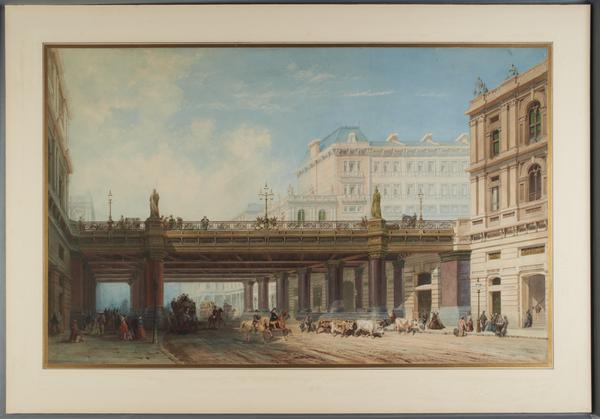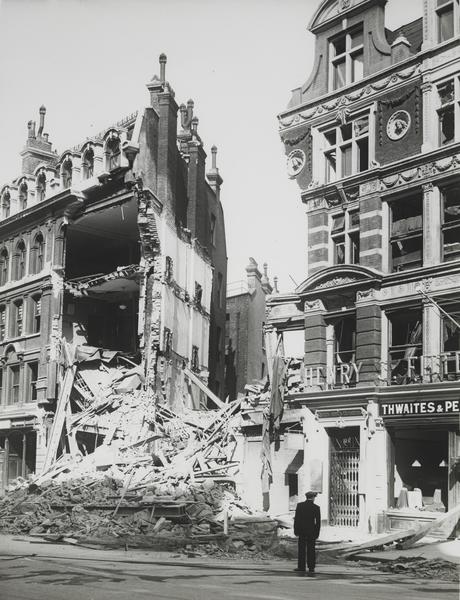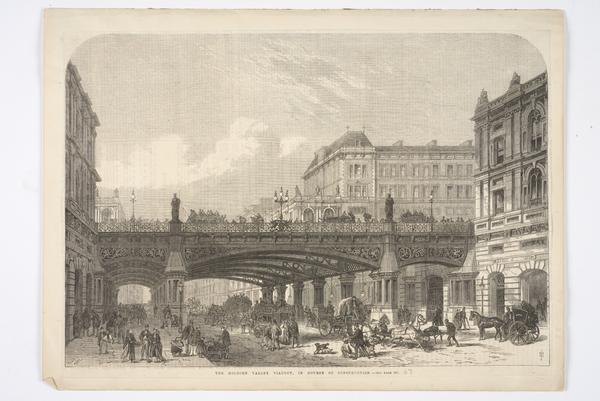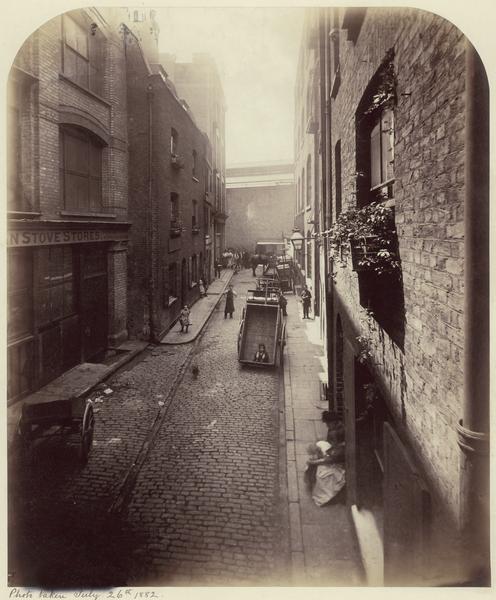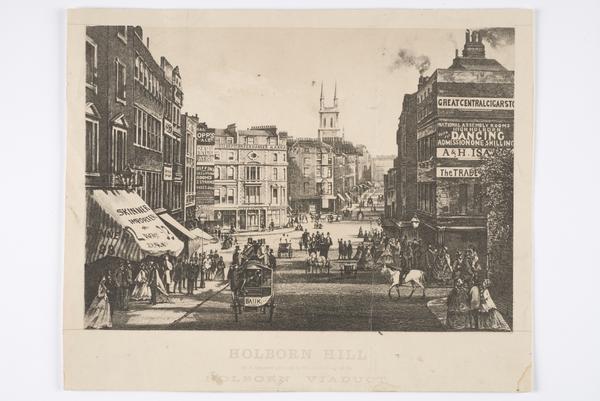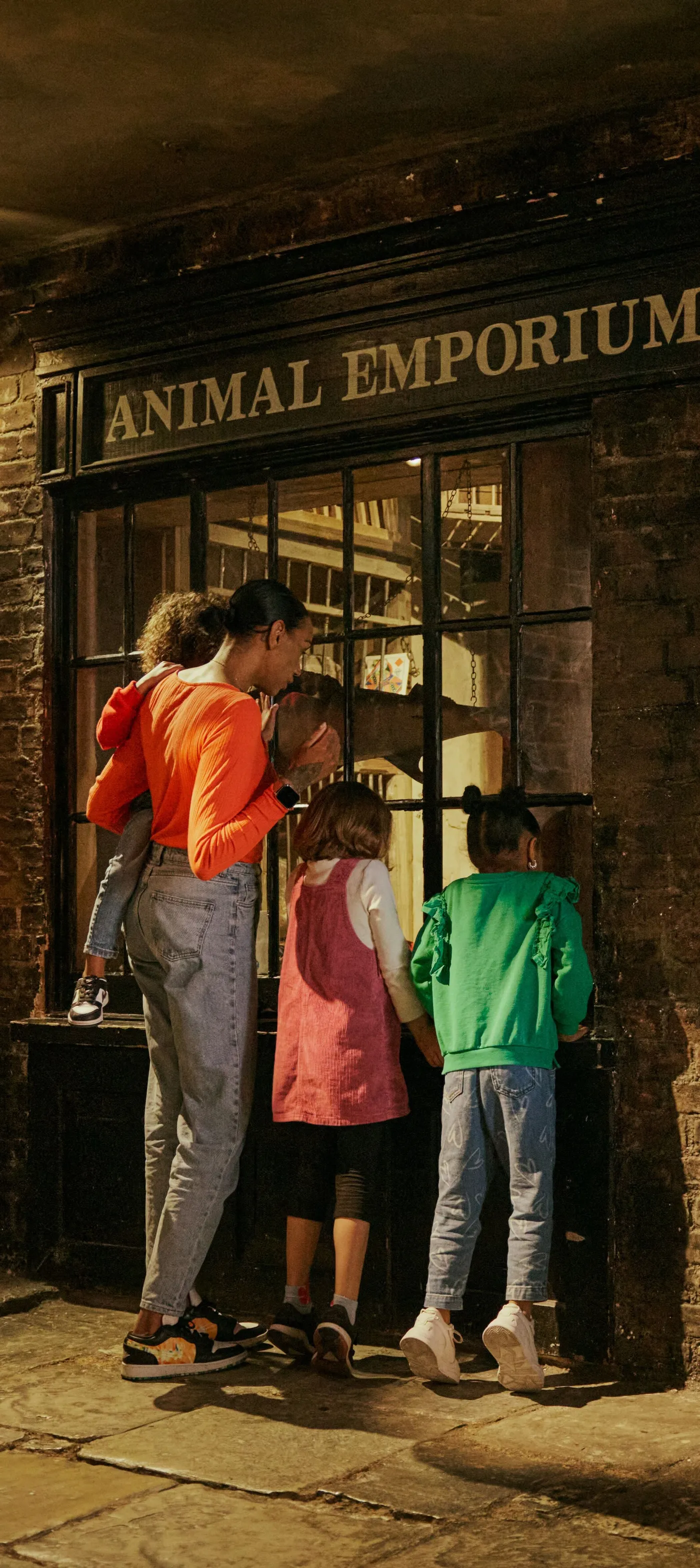Holborn Viaduct: The City’s bright red bridge
If you walk along past the glass and stone buildings on Farringdon Street, you’ll eventually be struck by a great brush of red. That’s the Holborn Viaduct, an ornate iron bridge built in the 1860s to give horse-drawn traffic easier access between Holborn and the City of London.
City of London
Opened 1869
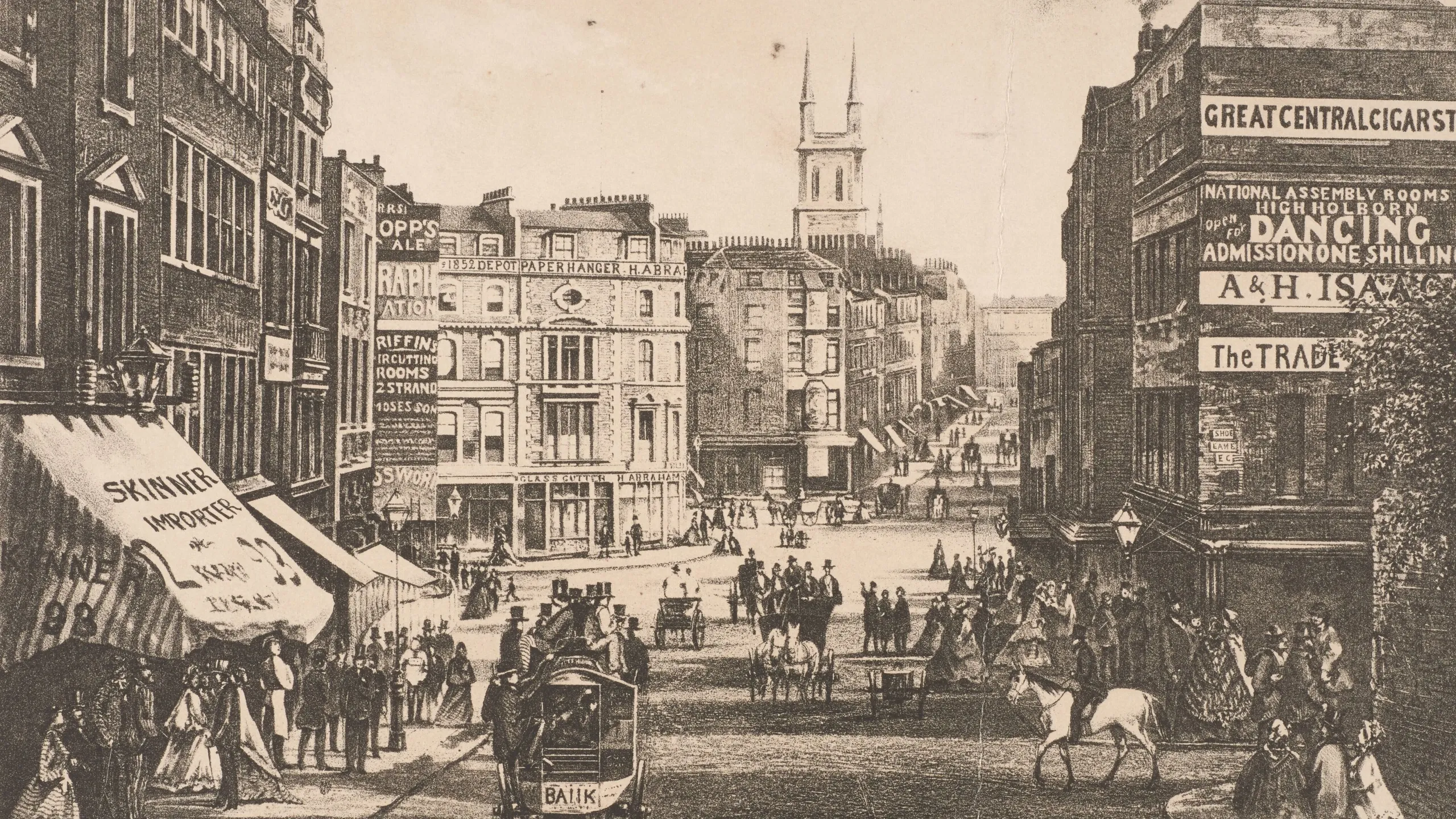
Where was the Holborn Viaduct built?
The Holborn Viaduct was built over the steep valley in between Holborn Hill and Snow Hill, which was difficult and dangerous to navigate for horse-drawn carts or carriages. This print shows Holborn Hill before the bridge was built. The viaduct sits where Holborn Bridge once crossed the River Fleet. This part of the Fleet was buried underground when Farringdon Street was built in the early 1800s.
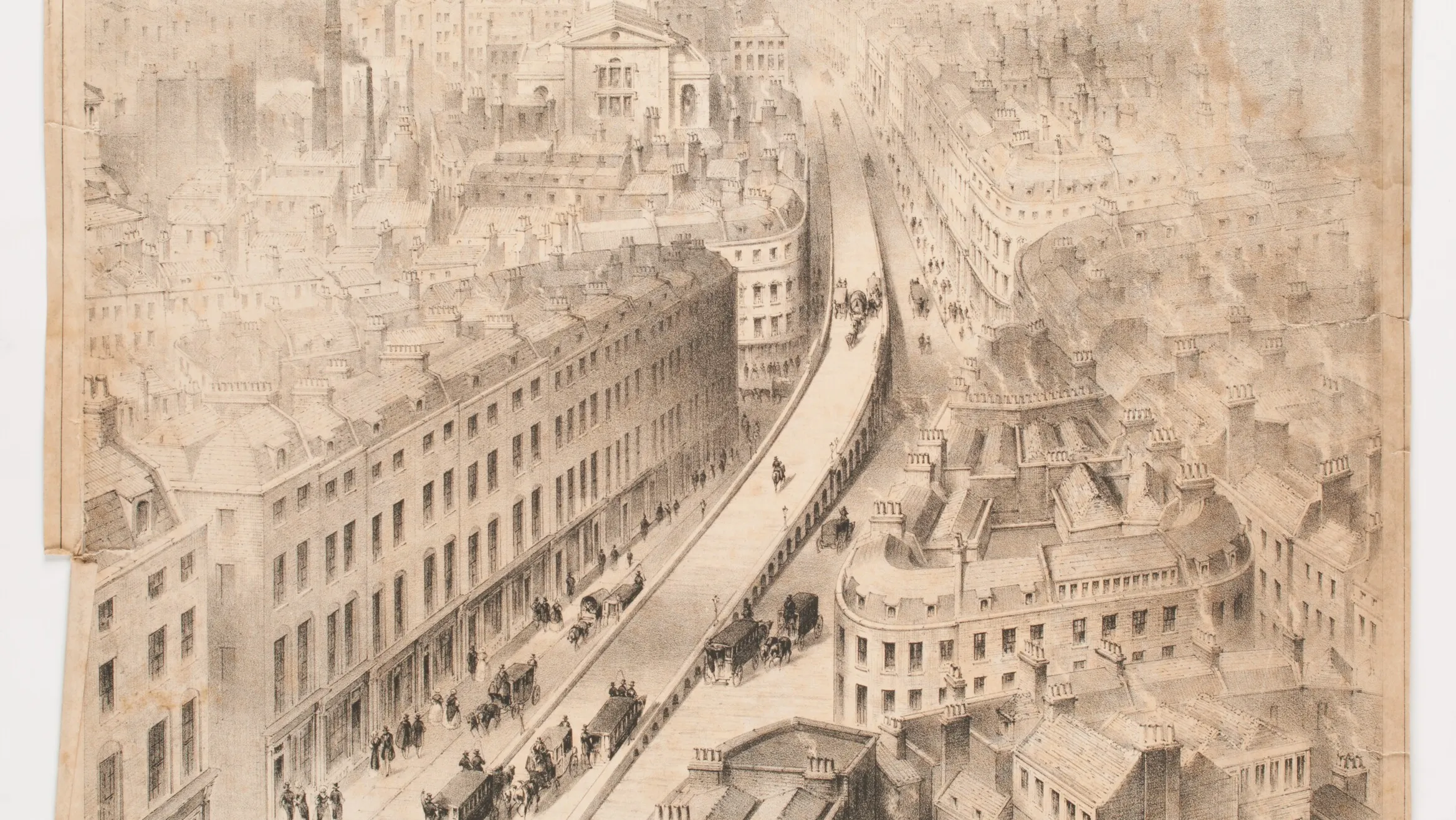
Why was the Holborn Viaduct built?
The Holborn Viaduct was built as part of the Holborn Valley Improvements. The scheme aimed to create an easy access road from west London into the City of London, particularly to the food market at Smithfield. The five-way Holborn Circus junction, Charterhouse Street and St Andrews Street were all built as part of the same scheme. This print shows a rejected design for the viaduct.

William Haywood designed the Holborn Viaduct
The bridge was designed by architect William Haywood, the City of London surveyor who also worked with engineer Joseph Bazalgette on improving London’s sewer system. The viaduct might look small and simple, but it actually stretches for around a quarter of a mile to connect Holborn and Newgate Street on a flat plane. This print shows an alternative design for the bridge.
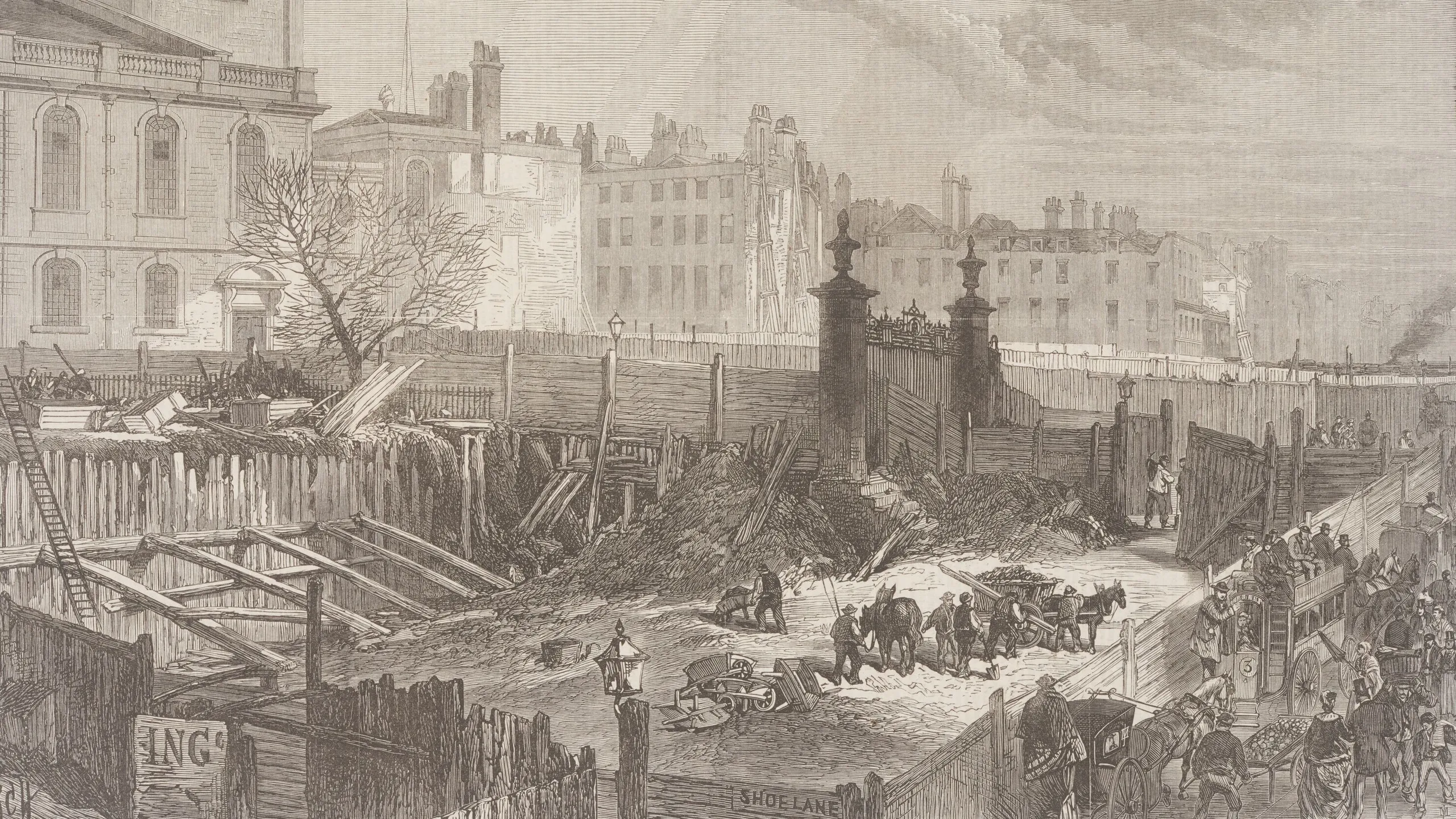
Surrounding areas were demolished
The Holborn Valley Improvement works began in 1863 by clearing old streets and houses around the valley. One of these areas was a notorious thoroughfare called Field Lane. Many poor Londoners lived here in terrible conditions in lodging houses. Field Lane also had a reputation as a place for thieves. Author Charles Dickens describes it in Oliver Twist as “the emporium of petty larceny”.
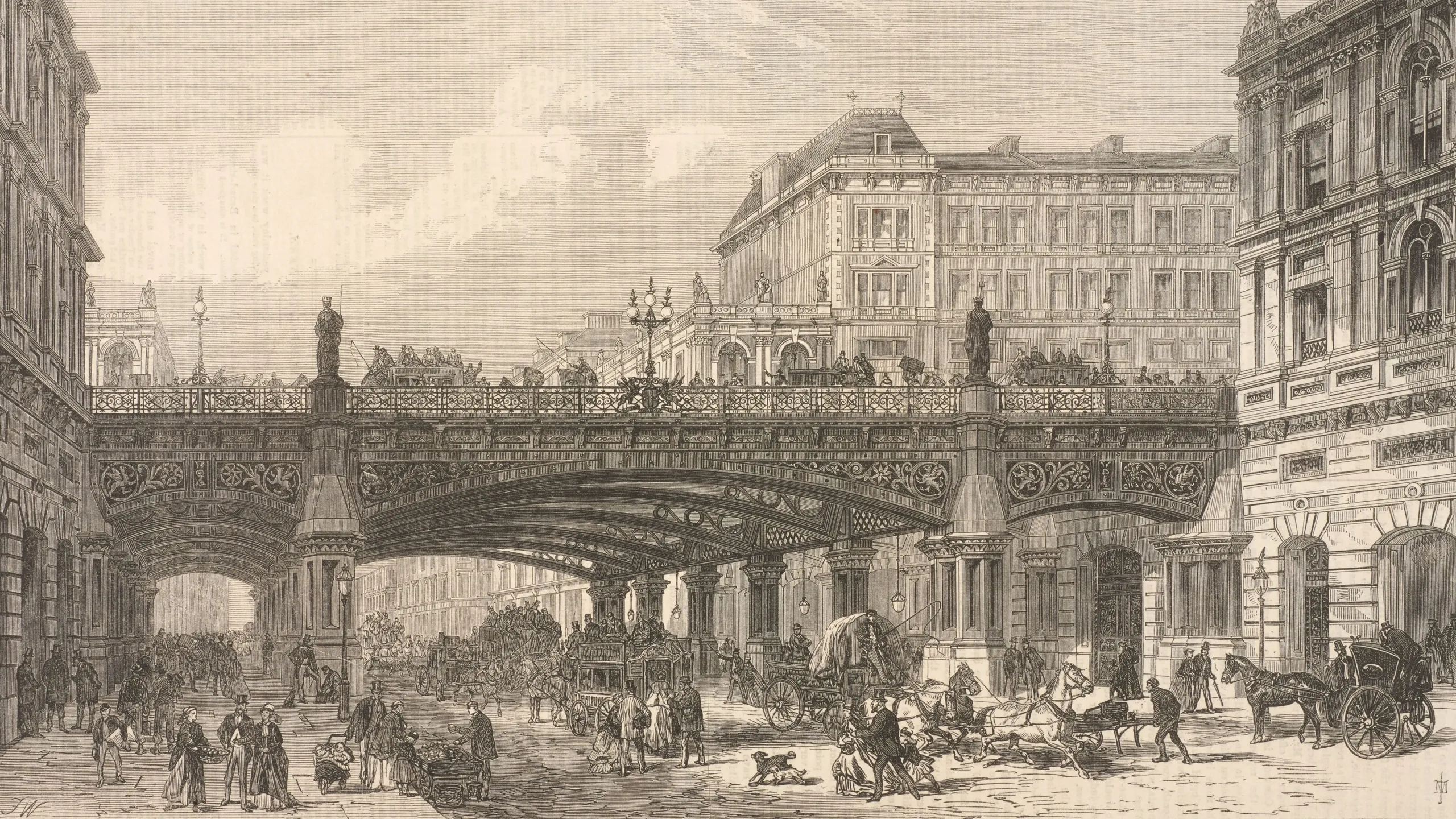
Queen Victoria officially opened the Holborn Viaduct
The Holborn Viaduct was opened by Queen Victoria on 6 November 1869, the same day she formally opened the new Blackfriars Bridge. Victoria’s ceremonial procession passed both under and across the bridge. The whole neighbourhood, including Smithfield Market, was decorated for the occasion. According to one report, the opening drew “uncommon interest and enthusiasm amongst all classes in the metropolis”.
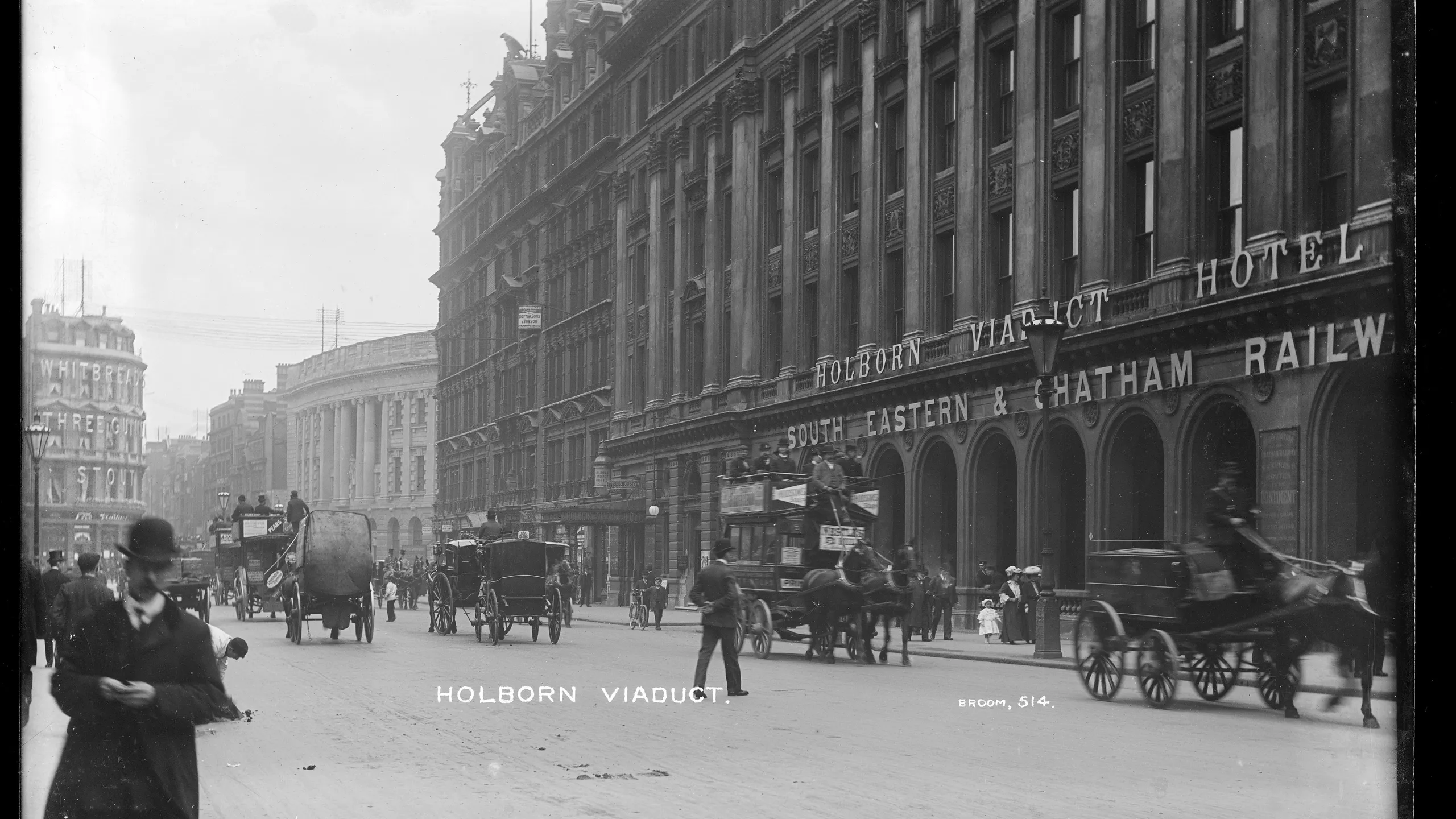
The viaduct had a station, a hotel and even a power station
The Holborn Viaduct Hotel, seen here in 1905, was built by the London, Chatham & Dover Railway as part of the front to Holborn Viaduct Station, which opened in 1874. The station closed in 1990 and was replaced by the underground City Thameslink station. In 1882, inventor Thomas Edison’s company opened the world’s first coal-fired power station at 57 Holborn Viaduct, supplying light to the surrounding area.

Holborn Viaduct sculptures
There’s plenty to look at on this ornate Victorian flyover. There are several bronzes, including winged lions, seated dragons and classical female figures representing ‘science’, ‘fine art’, ‘agriculture’ and ‘commerce’. There are also stone sculptures of the famous London lord mayors Henry Fitz Ailwin (1135–1212) and William Walworth (1322–1385). The City of London coat of arms looks over Farringdon Street below.


